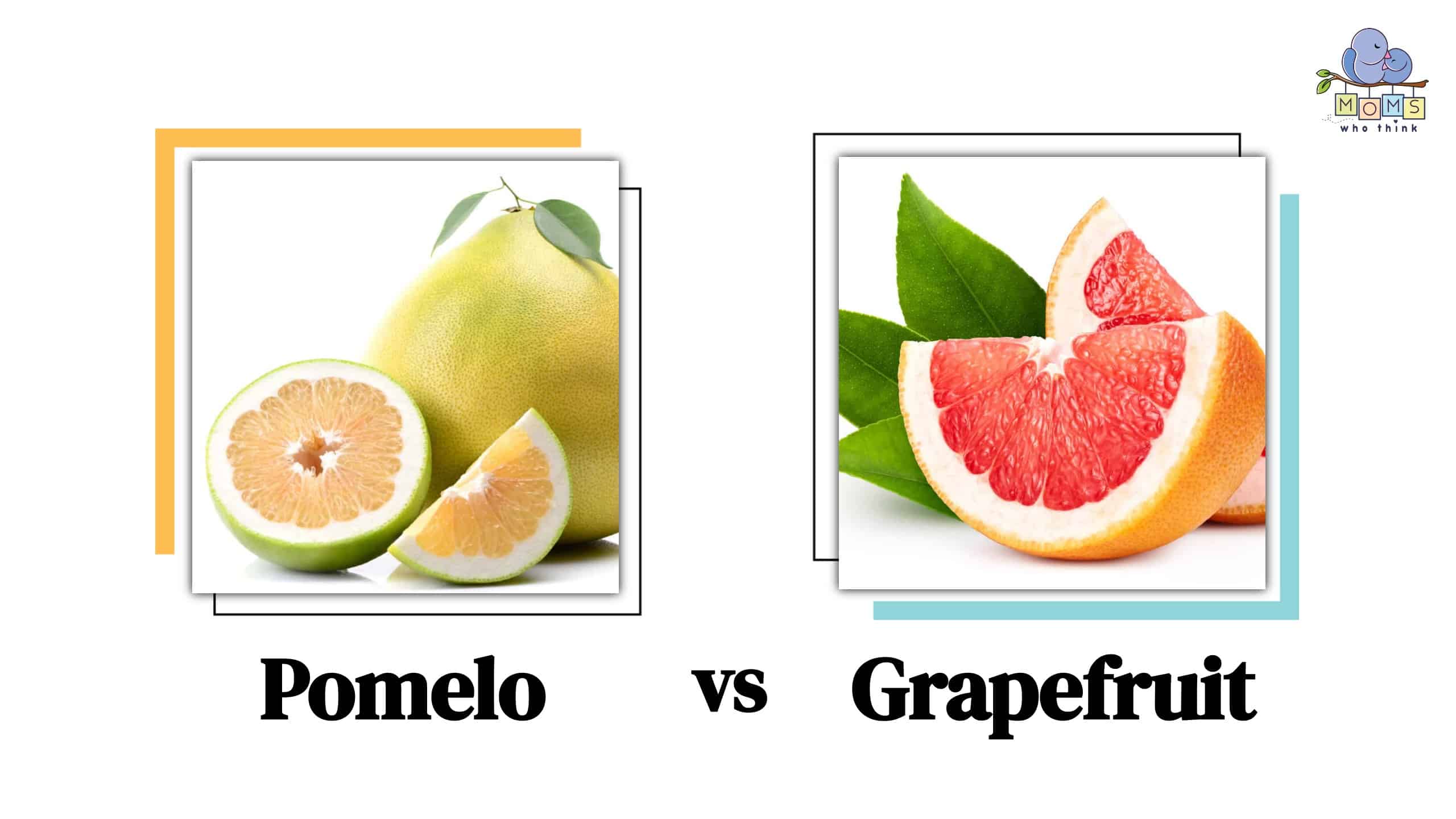When it comes to citrus fruits, pomelo and grapefruit are often mentioned in the same breath. While they may share some similarities, these fruits also have distinct characteristics that set them apart. From their origin and appearance to their taste and nutritional composition, pomelo and grapefruit offer unique qualities that make them stand out in the world of citrus.
In this article, we will explore the key differences between pomelo and grapefruit, examining their origin, appearance, taste, nutritional composition, availability, and more. We will also delve into a comprehensive health comparison, highlighting the various health benefits associated with these fruits, such as their vitamin content, antioxidant properties, fiber content, and hydration benefits.
Whether you're a citrus enthusiast looking to expand your palate or simply curious about the nutritional value of these fruits, this article will provide you with a thorough understanding of the distinctions between pomelo and grapefruit. By the end, you'll have a clearer picture of which fruit aligns with your taste preferences and dietary needs.
- The must-have convenient reference guide for every home cook!
- Includes more than 8,000 substitutions for ingredients, cookware, and techniques.
- Save time and money on by avoiding trips to grab that "missing" ingredient you don't really need.
Pomelo vs. Grapefruit: Origin and Appearance
Pomelo Origin and Appearance:
Scientifically known as Citrus maxima, Pomelo is native to Southeast Asia, particularly in countries like Malaysia, Thailand, and Indonesia. It holds the distinction of being the largest citrus fruit, often reaching the size of a small melon. Its impressive size has earned it the nickname “the king of citrus.” When fully ripe, the pomelo's thick rind can range in color from pale green to yellow. Its shape is typically round or slightly pear-shaped, resembling a large pear or a grapefruit that has been grown to super-sized proportions.
Grapefruit Origin and Appearance:
Grapefruit, scientifically known as Citrus paradisi, is a captivating hybrid fruit resulting from the crossbreeding of a sweet orange and a pomelo. This delightful citrus fruit, with its characteristic tangy and slightly bitter taste, is believed to have originated in Barbados in the Caribbean. Grapefruits vary in size, generally smaller compared to the mammoth pomelo. Their rind color can range from pale yellow to vibrant shades of orange, pink, or even reddish hues, depending on the variety. This colorful exterior, coupled with the fruit's juicy interior, makes grapefruit a visually appealing addition to any fruit bowl or dish.
Pomelo vs. Grapefruit: Taste and Flavor
Pomelo Taste and Flavor:
Known for its sweet and mild flavor, Pomelo offers a delightful taste experience that is both refreshing and invigorating. When you bite into a ripe pomelo, you'll encounter a burst of sweetness that is balanced by a subtle hint of bitterness. This unique combination creates a complex flavor profile that is highly enjoyable. The flesh of a pomelo is typically pale yellow or pink, with each segment offering a juicy and succulent texture. The sweetness of the pomelo is often compared to that of a grapefruit but with a milder and less acidic undertone.
Grapefruit Taste and Flavor:
Grapefruit is renowned for its tangy and slightly bitter taste. When you take a bite of a grapefruit, you'll experience a tanginess that is akin to biting into a citrusy delight. The flavor of grapefruit can vary depending on the variety, with some offering a more pronounced bitterness and others leaning towards a sweeter taste. This variation in sweetness is due to the different levels of natural sugars present in different grapefruit varieties. While grapefruit can have a refreshing and zesty taste, the bitterness provides a distinctive edge that sets it apart from other citrus fruits.
Pomelo vs. Grapefruit: Availability
Pomelo Availability:
Native to Southeast Asia, particularly countries like Malaysia, Thailand, and Indonesia, Pomelo is a popular fruit in these regions. It can be found in local markets and grocery stores. In areas where pomelo is grown, such as Southeast Asia and some parts of the United States, it is relatively easy to find during its peak season, which typically falls between late summer and early winter. However, outside of these regions, the availability of fresh pomelo may be limited. It may be more challenging to find Pomelo in regular supermarkets or grocery stores in other parts of the world.
Grapefruit Availability:
Grapefruit is more widely available and commonly found in grocery stores around the world. It is cultivated in many countries, including the United States, Mexico, Spain, and Israel, among others. The global production and distribution of grapefruit make it more accessible to consumers. You can typically find grapefruit in the produce section of supermarkets throughout the year, although its peak season varies depending on the variety and location. In regions where grapefruit is grown, such as Florida in the United States, it may be more abundant and readily available.
Health Comparison between Pomelo and Grapefruit

Pomelo and grapefruit offer similar nutritional benefits. Both fruits are rich in vitamin C, vitamin A, and antioxidants (which we will explore further below). However, pomelo is known to provide about twice as much vitamin C as grapefruit. The exact nutritional content may vary depending on the variety and size of the fruit.
Pomelo Health Benefits
Pomelo provides a range of nutrients that make it a valuable addition to a healthy diet. Here are some of the health benefits associated with pomelo:
Rich in Vitamin C: One pomelo fruit contains a significant amount of vitamin C, which acts as a powerful antioxidant and supports immune system function. Vitamin C also plays a role in collagen production, wound healing, and iron absorption.
- The must-have convenient reference guide for every home cook!
- Includes more than 8,000 substitutions for ingredients, cookware, and techniques.
- Save time and money on by avoiding trips to grab that "missing" ingredient you don't really need.
Antioxidant Properties: Pomelo contains cancer-fighting antioxidants, such as flavonoids and limonoids, which help protect cells from damage caused by free radicals These antioxidants contribute to overall health and may have potential anti-inflammatory effects.
Aids Digestion: The fiber content in pomelo promotes healthy digestion and helps prevent constipation. Fiber adds bulk to the stool, supports regular bowel movements, and contributes to a healthy gut microbiome.
Nutrient-Rich: Pomelo is a good source of essential nutrients, including copper, potassium, and fiber. Copper is involved in various enzymatic reactions, potassium is important for heart health and fluid balance, and fiber supports overall digestive health.
Grapefruit Health Benefits
Grapefruit offers its own set of health benefits. Here are some advantages associated with grapefruit:
High in Vitamin C: Like pomelo, grapefruit is rich in vitamin C, which supports immune function and acts as an antioxidant to protect cells from damage.
Fiber-Rich: Grapefruit, like other fruits, provides a good amount of dietary fiber. Fiber aids heart health by reducing inflammation, maintaining healthy cholesterol levels, and supporting a healthy weight by promoting satiety.
Hydration: Grapefruit has a high water content, contributing to hydration and helping to maintain proper bodily functions.
Antioxidant Properties: Grapefruit contains various antioxidants, including vitamin C and other phytochemicals, which help combat oxidative stress and reduce the risk of chronic diseases.
It's important to note that individual health needs and dietary considerations may vary. Incorporating a variety of fruits, including pomelo and grapefruit, into a well-balanced diet can provide a range of health benefits. As with any food, it's best to consume them in moderation as part of an overall healthy lifestyle.
In Conclusion
In conclusion, while pomelo and grapefruit share some similarities in terms of health benefits, taste, and appearance, they also have distinct differences. Understanding these differences can help individuals make informed choices when incorporating these citrus fruits into their diet.
It's important to note that individual preferences for taste and texture may influence personal preferences between pomelo and grapefruit. Both fruits offer unique flavors and nutritional benefits, making them a healthy addition to a balanced diet.
- The must-have convenient reference guide for every home cook!
- Includes more than 8,000 substitutions for ingredients, cookware, and techniques.
- Save time and money on by avoiding trips to grab that "missing" ingredient you don't really need.

